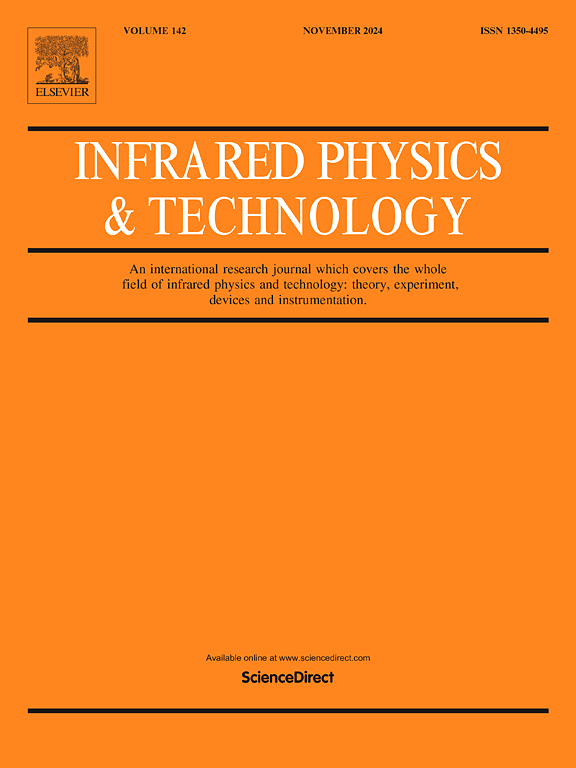通过基于变换的语境化和新的对数卷积技术增强高光谱图像分类
IF 3.1
3区 物理与天体物理
Q2 INSTRUMENTS & INSTRUMENTATION
引用次数: 0
摘要
高光谱图像(HSI)分类在遥感和地理空间分析中是必不可少的,特别是对精确的土地覆盖分类。该技术提供了详细的光谱信息,从而可以准确地识别和区分各种材料和表面类型。最近,已经转向采用深度学习技术来增强恒生指数分类。值得注意的是,卷积神经网络(cnn)显著改进了局部特征的提取和分析,从而提高了分类精度。然而,传统的cnn在捕获恒指数据中的远程依赖关系和全局上下文信息方面面临挑战,这可能会阻碍分类性能。此外,就模型参数和训练要求而言,这些网络的计算成本往往很高。为了解决这些限制,本文提出了一个新的轻量级框架,该框架集成了本地和全局特征,同时捕获了增强HSI分类的远程依赖关系。我们的方法首先结合了新颖的基于对数的3D和2D群卷积,从HSI数据中提取相关的光谱空间特征,并解决了计算成本和模型复杂性的问题。为了增强空间位置编码和语义特征映射,我们引入了空间-上下文补丁嵌入(SCPE)方法,该方法提高了补丁之间的空间相关性,降低了复杂性。本文提出的空间上下文正弦余弦位置嵌入(SC)2PosEmbed由两个部分组成:全局正弦余弦位置嵌入(GSCPosEmbed)和空间上下文位置嵌入(SCPosEmbed)。该模块捕获了详细的位置信息,改善了HSI中空间特征的表示。最后,我们通过结合视觉转换器捕获光谱和空间信息的长期依赖关系。我们在四个公开可用的数据集上评估我们提出的框架,并将其性能与最先进的方法进行比较。实验结果突出了我们的模型在HSI分类任务中的优越性能,证明了它在保持计算效率的同时捕获局部和全局特征的有效性。我们的框架代表了HSI分析的一个有希望的进步,提供了改进的分类准确性和跨各个领域的更广泛的适用性。本文章由计算机程序翻译,如有差异,请以英文原文为准。

Enhancing Hyperspectral image classification through transformer-based contextualization and novel logarithmic convolutional techniques
Hyperspectral image (HSI) classification is essential in remote sensing and geospatial analysis, particularly for precise land-cover classification. This technique offers detailed spectral information, which allows for the accurate identification and differentiation of various materials and surface types. Recently, there has been a shift towards employing DL techniques to enhance HSI classification. Notably, convolutional neural networks (CNNs) have significantly improved the extraction and analysis of local features, leading to better classification accuracy. However, traditional CNNs face challenges in capturing long-range dependencies and global contextual information within HSI data, which can hinder classification performance. Additionally, these networks tend to be computationally expensive in terms of model parameters and training requirements. To address these limitations, this paper proposes a novel lightweight framework that integrates local and global features while capturing long-range dependencies for enhanced HSI classification. Our approach begins with a combination of novel logarithmic-based 3D and 2D group convolutions to extract correlated spectral–spatial features from the HSI data and address the issues of computational cost and model complexity. To enhance spatial positional encoding and semantic feature mapping, we introduce the Spatial-Context Patch Embedding (SCPE) approach, which improves spatial correlation between patches and reduces complexity. Our novel Spatial Contextual Sine–Cosine Positional Embedding () consists of two components: the Global Sine–Cosine Position Embedding (GSCPosEmbed) and the Spatial Contextual Position Embedding (SCPosEmbed). This module captures detailed positional information, improving the representation of spatial features in HSI. Finally, we capture the long-term dependencies of spectral and spatial information through the incorporation of a vision Transformer. We evaluate our proposed framework on four publicly available datasets and compare its performance against state-of-the-art methods. The experimental results highlight the superior performance of our model in HSI classification tasks, demonstrating its effectiveness in capturing both local and global features while maintaining computational efficiency. Our framework represents a promising advancement in HSI analysis, offering improved classification accuracy and broader applicability across various domains.
求助全文
通过发布文献求助,成功后即可免费获取论文全文。
去求助
来源期刊
CiteScore
5.70
自引率
12.10%
发文量
400
审稿时长
67 days
期刊介绍:
The Journal covers the entire field of infrared physics and technology: theory, experiment, application, devices and instrumentation. Infrared'' is defined as covering the near, mid and far infrared (terahertz) regions from 0.75um (750nm) to 1mm (300GHz.) Submissions in the 300GHz to 100GHz region may be accepted at the editors discretion if their content is relevant to shorter wavelengths. Submissions must be primarily concerned with and directly relevant to this spectral region.
Its core topics can be summarized as the generation, propagation and detection, of infrared radiation; the associated optics, materials and devices; and its use in all fields of science, industry, engineering and medicine.
Infrared techniques occur in many different fields, notably spectroscopy and interferometry; material characterization and processing; atmospheric physics, astronomy and space research. Scientific aspects include lasers, quantum optics, quantum electronics, image processing and semiconductor physics. Some important applications are medical diagnostics and treatment, industrial inspection and environmental monitoring.

 求助内容:
求助内容: 应助结果提醒方式:
应助结果提醒方式:


